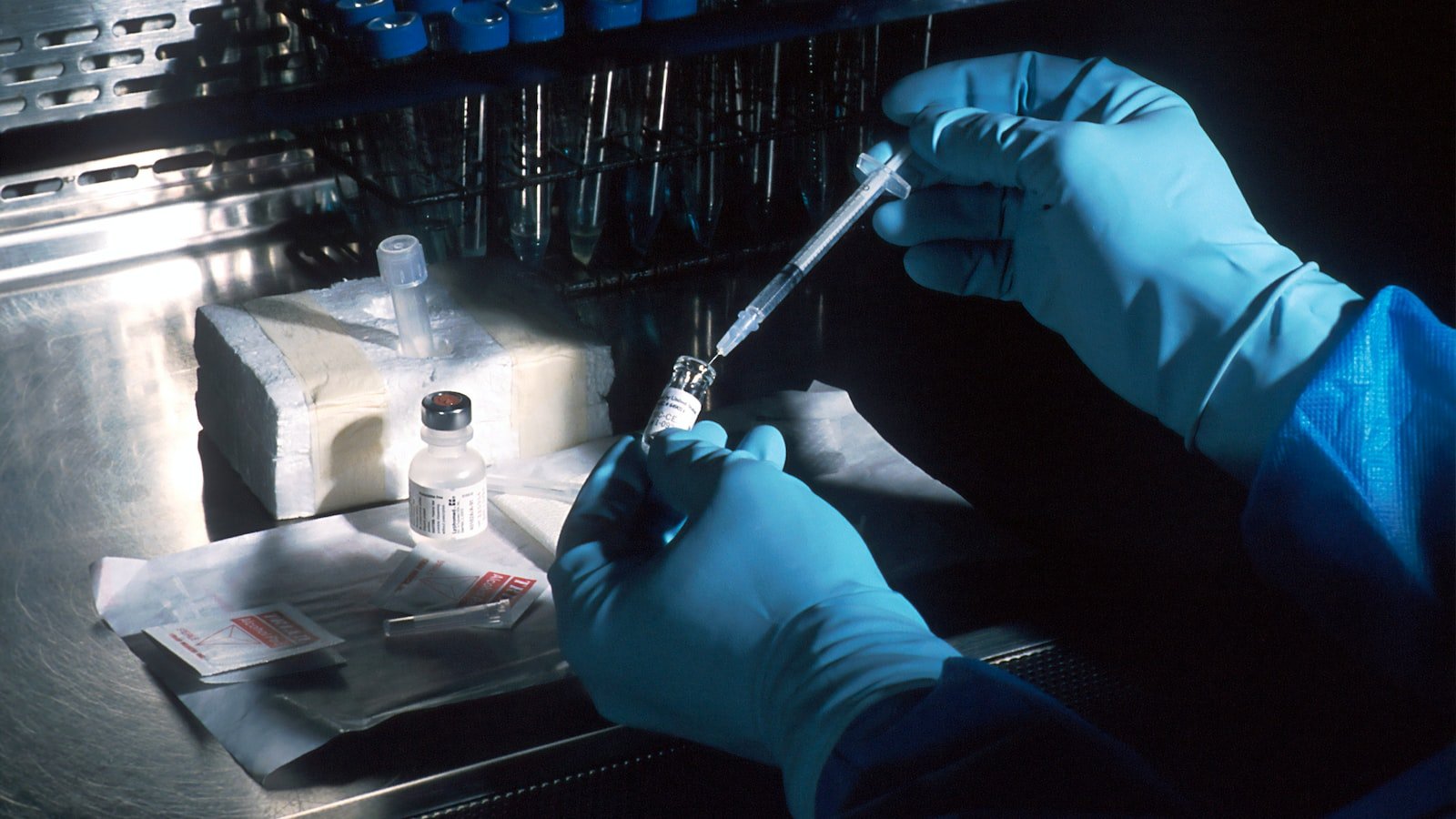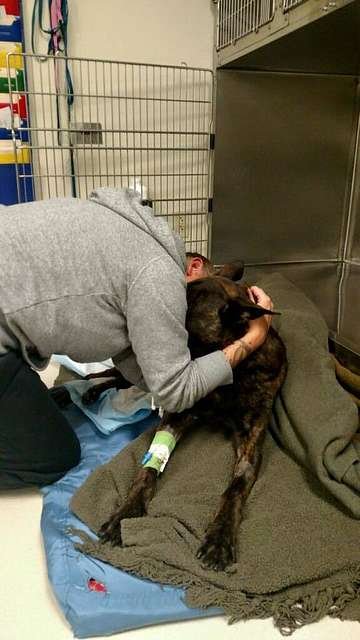In a world where our furry friends have become more than just loyal companions, they are now stepping into the realms of medical miracles. Dogs, with their impeccable sense of smell, are proving to be powerful allies in the fight against cancer. Hidden within their wet noses lies an astonishing ability to detect this notorious disease, often before conventional diagnostic tests can even begin to sniff it out. Welcome to the fascinating universe of training dogs for cancer detection – a breakthrough approach that illuminates a promising future for early intervention and heightened survival rates. As we delve into the intricate process of molding our four-legged friends into cancer-finding superheroes, prepare to be whisked away into a world of instinct, determination, and hope. Get ready to unveil the secrets behind their wet noses and embark on an extraordinary journey of canine intuition.
Table of Contents
- Understanding the Science behind Cancer Detection in Dogs
- Effective Training Methods for Teaching Cancer Detection in Dogs
- Building a Strong Foundation through Scent Training
- Enhancing Canine Accuracy in Cancer Detection through Positive Reinforcement
- Implementing Real-Life Scenarios to Strengthen Dogs’ Cancer Detection Skills
- Q&A
- To Wrap It Up

Understanding the Science behind Cancer Detection in Dogs
When it comes to detecting cancer, dogs have proven to be astonishingly accurate. Their incredible sense of smell allows them to detect the presence of cancerous cells, giving us hope for improved early detection and treatment options.
The science behind this phenomenon lies in a dog’s olfactory system. Dogs have over 300 million scent receptors, compared to our mere 6 million. This heightened sense of smell enables them to detect even the most subtle changes in an individual’s odor, including the volatile organic compounds (VOCs) emitted by cancer cells.
Research has shown that dogs can detect various types of cancer, including lung, breast, ovarian, and even skin cancer, with an accuracy rate of up to 99%. By training dogs to identify specific cancer odors, scientists and medical professionals are unlocking a powerful tool in the fight against this devastating disease.
How do dogs do it?
- Dogs are trained to identify cancer-specific odors through positive reinforcement techniques.
- Once trained, they can detect cancer cells in a person’s breath, urine, or even the odor emanating from a tumor.
- In some cases, dogs have been able to pinpoint the exact location of a tumor within the body.
It is important to note that while dogs can detect cancer, they are not a replacement for traditional medical screening methods. However, they offer a promising complement to existing techniques and may assist in early cancer detection, leading to improved outcomes for patients.
The future of cancer detection
The potential applications of canine cancer detection are vast. Scientists are exploring ways to replicate the canine olfactory system through electronic sensors and nanotechnology, leading to the development of advanced diagnostic tools. Additionally, ongoing research aims to determine the specific cancer-related VOCs that dogs are detecting, paving the way for targeted therapies and personalized treatment plans.
In conclusion, opens a world of possibilities in the fight against this formidable disease. By harnessing the power of their extraordinary sense of smell, we can hope to develop innovative methods for early detection, increased treatment efficacy, and ultimately, improved patient outcomes.

Effective Training Methods for Teaching Cancer Detection in Dogs
Dogs have an incredible ability to detect various types of cancer in humans accurately. Here are some effective training methods that can be used to teach dogs how to identify cancer:
- Scent Training: Dogs have an exceptional sense of smell, making them perfect candidates for cancer detection. Scent training involves exposing the dogs to the odor of cancer cells and training them to recognize and differentiate it from other scents. This method typically involves pairing the cancer cell odor with a reward, such as treats or playtime, to create a positive association.
- Positive Reinforcement: Dogs respond well to positive reinforcement when learning new skills. By rewarding them for correctly identifying cancer cells, they are encouraged to continue with their training. This can be achieved through treats, praise, or even interactive play sessions with toys.
- Gradual Complexity: Training dogs to detect cancer requires a step-by-step approach. Start by introducing them to easier scent samples and gradually increase the difficulty level. This ensures a solid foundation is built, and dogs are capable of accurately detecting subtle cancer odors.
With proper training and consistent practice, dogs can become valuable allies in the fight against cancer. It is essential to work closely with professional trainers and veterinary experts specializing in this field to ensure the highest level of accuracy and reliability during the cancer detection process.

Building a Strong Foundation through Scent Training
In the world of dog training, scent training holds a special place. It not only provides mental stimulation for our furry companions but also taps into their innate abilities. By , you can unlock a whole new world of possibilities.
One of the key aspects of scent training is teaching your dog to rely on his nose. Dogs have an incredible sense of smell, and they are capable of detecting even the faintest odors. Through consistent training and positive reinforcement, you can help your dog fine-tune his olfactory skills. This involves exposing your dog to different scents and gradually increasing the difficulty level as they progress.
Another important element of scent training is teaching your dog to indicate when they have found the target scent. This can be done through various methods, such as sitting, pawing, or barking. By establishing clear communication with your dog, you can effectively train them to signal when they have successfully located the desired scent.
- Patience is key in scent training. It takes time for your dog to understand and master each step of the training process. Remember to celebrate small victories and be consistent in your approach.
- Make the training sessions fun and engaging for both you and your dog. Incorporate games, treats, and positive reinforcement to keep their interest high.
- Gradually increase the difficulty level as your dog becomes more proficient. Start with simple tasks and gradually progress to more complex scent challenges.
Scent training not only builds a strong foundation but also strengthens the bond between you and your dog. It taps into their natural instincts, stimulates their mind, and provides a fulfilling activity. So, embrace the power of scent training and explore the amazing capabilities that lie within your canine companion!
Enhancing Canine Accuracy in Cancer Detection through Positive Reinforcement
Dogs have long been known for their incredible sense of smell, and now they are taking on a new role as cancer detectors. With their ability to detect even the faintest scent, canines are showing great promise in identifying cancer cells in humans.
However, in order to enhance the accuracy of these furry friends, positive reinforcement training methods are being used. By rewarding dogs for correctly identifying cancer samples, they learn to associate the scent with a positive outcome, increasing their accuracy over time.
Positive reinforcement training involves the use of rewards such as treats, praise, or play to encourage desired behavior. This method not only strengthens the bond between the dog and its handler but also motivates the dog to perform at its best. By consistently rewarding dogs for correctly identifying cancer samples, they become more reliable and precise in their detection abilities.
- Improved Accuracy: Through positive reinforcement training, dogs become more accurate in detecting cancer cells, enabling earlier and more accurate diagnosis.
- Increased Efficiency: By using positive reinforcement, the training process becomes more efficient and effective, allowing dogs to learn faster and perform better.
- Ethical Approach: Positive reinforcement training is a humane and ethical way to train dogs, focusing on rewards rather than punishment.
In conclusion, employing the power of positive reinforcement is proving to be a valuable tool in enhancing the accuracy of canines in cancer detection. By using this training method, dogs are able to detect cancer cells with greater precision, leading to earlier diagnosis and potentially saving lives.
Implementing Real-Life Scenarios to Strengthen Dogs’ Cancer Detection Skills
Dogs are renowned for their incredible sense of smell, which has been harnessed in various fields, including cancer detection. Implementing real-life scenarios is a crucial aspect of strengthening dogs’ cancer detection skills. By exposing them to a diverse range of scents and providing them with hands-on training, we empower these four-legged detectives to save lives.
In these scenarios, dogs are presented with samples and objects that emit unique odors associated with different types of cancer. This training involves creating a controlled environment that simulates real-life situations where detection is required. Dogs are taught to differentiate between cancerous and non-cancerous samples by indicating their discovery through a designated response, such as sitting or pawing.
To reinforce learning and enhance accuracy, trainers utilize reward-based methods. Treats or positive reinforcement, like verbal praise or playtime, are employed to reinforce correct identifications. This positive reinforcement increases a dog’s motivation to excel in their cancer detection abilities, contributing to their overall success in combatting this deadly disease.
By implementing real-life scenarios, we ensure that these skilled canine companions are well-prepared for their critical role in early cancer detection. Their extraordinary olfactory abilities combined with rigorous training enable them to assist medical professionals and positively impact the lives of many. These highly-trained dogs are not only heroes in our eyes but also invaluable allies in the fight against cancer.
Q&A
Q: Can dogs be trained to detect cancer?
A: Absolutely! Dogs have the remarkable ability to detect the subtle scent changes in the human body caused by cancer. With proper training, they can become excellent cancer detection companions.
Q: How does a dog detect cancer?
A: Dogs have an incredibly sensitive nose capable of detecting even the tiniest odor molecules emitted by cancer cells. They are trained to differentiate between healthy and cancerous scents, alerting their handler when they detect the latter.
Q: What breeds are best suited for cancer detection training?
A: While there is no specific breed requirement, certain breeds like Labrador Retrievers, German Shepherds, and Golden Retrievers are often chosen due to their great sense of smell and trainability. However, any dog can potentially be trained for cancer detection!
Q: How long does it take to train a dog for cancer detection?
A: Training duration varies depending on the dog, its age, and prior training experience. On average, it can take 6-18 months to fully train a dog to accurately detect cancer. Patience and consistency during training are key.
Q: Where can one find a professional cancer detection dog trainer?
A: It is best to seek out reputable dog training organizations or dedicated programs that specialize in training dogs for cancer detection. These organizations have experienced trainers who follow scientifically proven methods.
Q: Can I train my own dog to detect cancer?
A: While it is possible to train your own dog, it is highly recommended to seek professional guidance. Specialized trainers possess the knowledge and experience necessary to ensure effective training and reliable results.
Q: Are there any risks or downsides to training a dog for cancer detection?
A: Training a dog for cancer detection involves rigorous scent discrimination exercises. While considered safe, it is essential to make sure your dog is physically and mentally fit for the training process and takes regular breaks to avoid exhaustion.
Q: Can a cancer detection dog replace medical screening?
A: No, dogs are not intended to replace medical screening methods such as mammograms or biopsies. Instead, they serve as a valuable adjunctive tool that can complement traditional diagnostic procedures.
Q: Can these cancer detection dogs actually save lives?
A: Absolutely! Studies and real-life success stories have demonstrated the potential life-saving capabilities of trained cancer detection dogs. Their ability to detect cancer at early stages can lead to prompt medical intervention and improved treatment outcomes.
To Wrap It Up
As we reach the tail-end of this article, we hope you’ve gained an enlightened glimpse into the extraordinary world of training dogs for cancer detection. From their innate olfactory talent to the remarkable bond forged between humans and their canine companions, our journey has been nothing short of awe-inspiring.
Remember, training a dog for cancer detection is no walk in the park. It requires patience, dedication, and a deep understanding of canine behavior. But the rewards are immeasurable. By harnessing their sniffing prowess, these four-legged heroes have the power to save countless lives, offering hope where it may seem scarce.
Whether you’re a dog lover eager to explore this fascinating field or you know someone whose life can benefit from a cancer detection dog, we encourage you to delve further into this topic. Bookstores brim with informative resources, and reputable organizations stand ready to guide you through the training process.
But let’s not forget the unsung heroes—the dedicated trainers, researchers, and handlers who toil behind the scenes, fueling the progress that propels cancer detection dogs into the limelight. Their unwavering commitment to science, training, and the welfare of these incredible dogs paves the way for breakthroughs that impact lives far beyond our imagination.
So next time you encounter a furry friend wagging its tail with gusto, take a moment to appreciate their extraordinary capabilities. Perhaps behind that slobbery grin lies a canine poised to make a remarkable difference in the field of cancer detection. Remember, they may not wear capes, but their intuition and loyalty make them true superheroes in our midst.
As we bid farewell, let us continue to marvel at the canine spirit that drives these amazing dogs forward. And may the world become a better place, one wagging tail, one loving snuggle, and one early cancer detection at a time.
As an affiliate, my content may feature links to products I personally use and recommend. By taking action, like subscribing or making a purchase, you’ll be supporting my work and fueling my taco cravings at the same time. Win-win, right?
Want to read more? Check out our Affiliate Disclosure page.